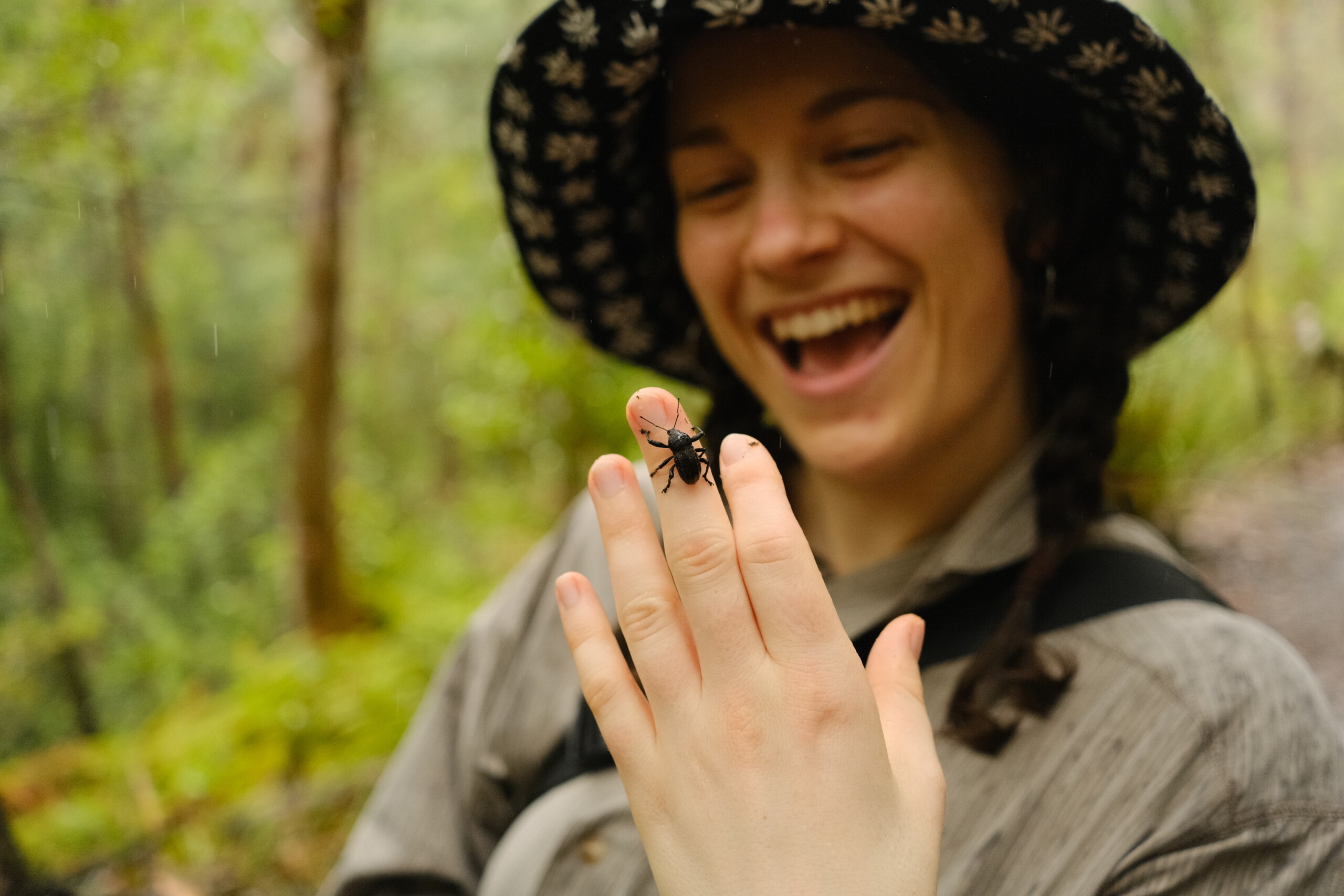From 17–23 November, Australians are being urged to step outside, look closer, and discover the secret world beneath their feet during Bugs in My Backyard Week – a brand-new national event encouraging families, schools and nature lovers to photograph and record the mini-beasts living all around them.
This coincides with the official launch of a new national citizen-science project led by the Invasive Species Council with support from Invertebrates Australia and National Geographic.
Every photo uploaded through the free iNaturalist app helps scientists better understand Australia’s hidden biodiversity and could even help stop the next invasive pest before it spreads.
‘Bug Hunt turns everyday Aussies – kids, parents, teachers – into wildlife heroes,’ Invasive Species Council’s Citizen Science Coordinator, Jess Ward-Jones, said.
‘All you need is your phone and a bit of curiosity. Every photo you take helps scientists understand and protect Australia’s incredible wildlife – and could even stop the next fire ant or shothole borer outbreak before it spreads.
‘From November 17-23, we’ll celebrate our first-ever Bugs in My Backyard Week – supported by Australian Geographic – with fun activities, special features and prizes to be won. We aim to build Bugs in My Backyard Week into an annual springtime snapshot of Australia’s bugs.
‘When we say ‘bugs’, we don’t just mean insects – we’re talking about all invertebrates, from beetles and butterflies to snails, spiders, millipedes and worms. Around 70 per cent of our native invertebrates are undescribed by Western science. That means every snapshot can build scientific knowledge – or be an early warning sign that helps protect our wildlife from invasive species.
‘Our mini-beasts are the quiet workers of nature – pollinating plants, building soil and feeding our most iconic animals, but invasive species, land clearing, pollution and climate change are putting them under massive pressure.
‘Right now, fire ants are marching through parts of Queensland and could spread across Australia, devastating wildlife, our way of life and costing our economy $2 billion per year if we don’t contain them.
‘These invaders move fast and travel silently – through pot plants, mulch or stormwater drains – and by the time authorities detect them, it’s often too late. That’s why citizen science is such a powerful tool in our biosecurity arsenal.
‘By joining Bug Hunt, Australians are giving science an extra set of eyes at a time when we need it most.
‘Whether you’re a nature lover, gardener or just want to play with your kids outdoors – you can sign up right now at bughunt.org.au and start snapping straight away. Just take a clear photo and upload it through the free iNaturalist app. There’s no need to touch or disturb what you find; a simple photo is all that is needed to help experts in the iNaturalist community.
‘We’ve also developed curriculum-aligned lesson plans with Cool.org, which are rolling out to primary and high schools across the country.’
Invertebrates Australia’s Bug Hunt Coordinator Alison Mellor said:
‘When we look closely, we discover how much life is right under our noses. A lovely Christmas beetle or bogong moth on our windowsill is just as fascinating – and important – as a koala or a kookaburra. We’re hoping Bug Hunt will inspire people to join the growing movement of folks learning to appreciate these tiny wonders, while in turn discovering the health benefits of connecting with the little critters around them.
‘Australia’s native invertebrates are wonderful, sometimes bizarre and often brilliantly adapted to their environment – we have peacock spiders that dance, beetles that glow and snails found nowhere else on Earth. Unfortunately, almost 1000 invertebrate species found in Australia are listed as threatened.
‘What most people may not know is that around 70 percent of our native invertebrates remain undescribed by Western science. That’s probably about 200,000 species that people have an opportunity to better understand.
‘Invertebrates make up more than 95 per cent of all animal species on Earth, yet most of Australia’s remain ignored in conservation. That’s an enormous gap in our knowledge about the natural world and how it’s faring.’
Photo credit: Hayden Starr.







